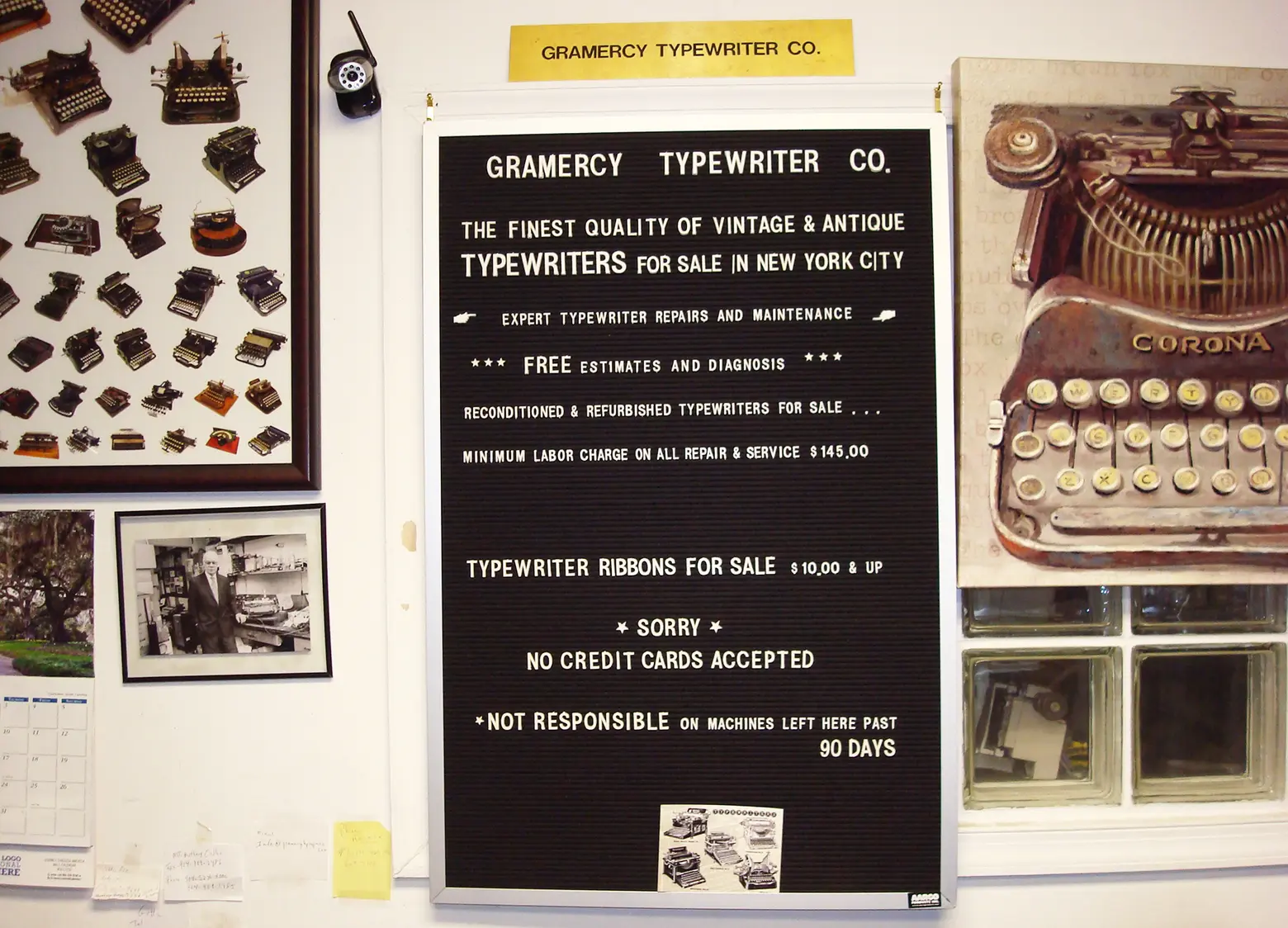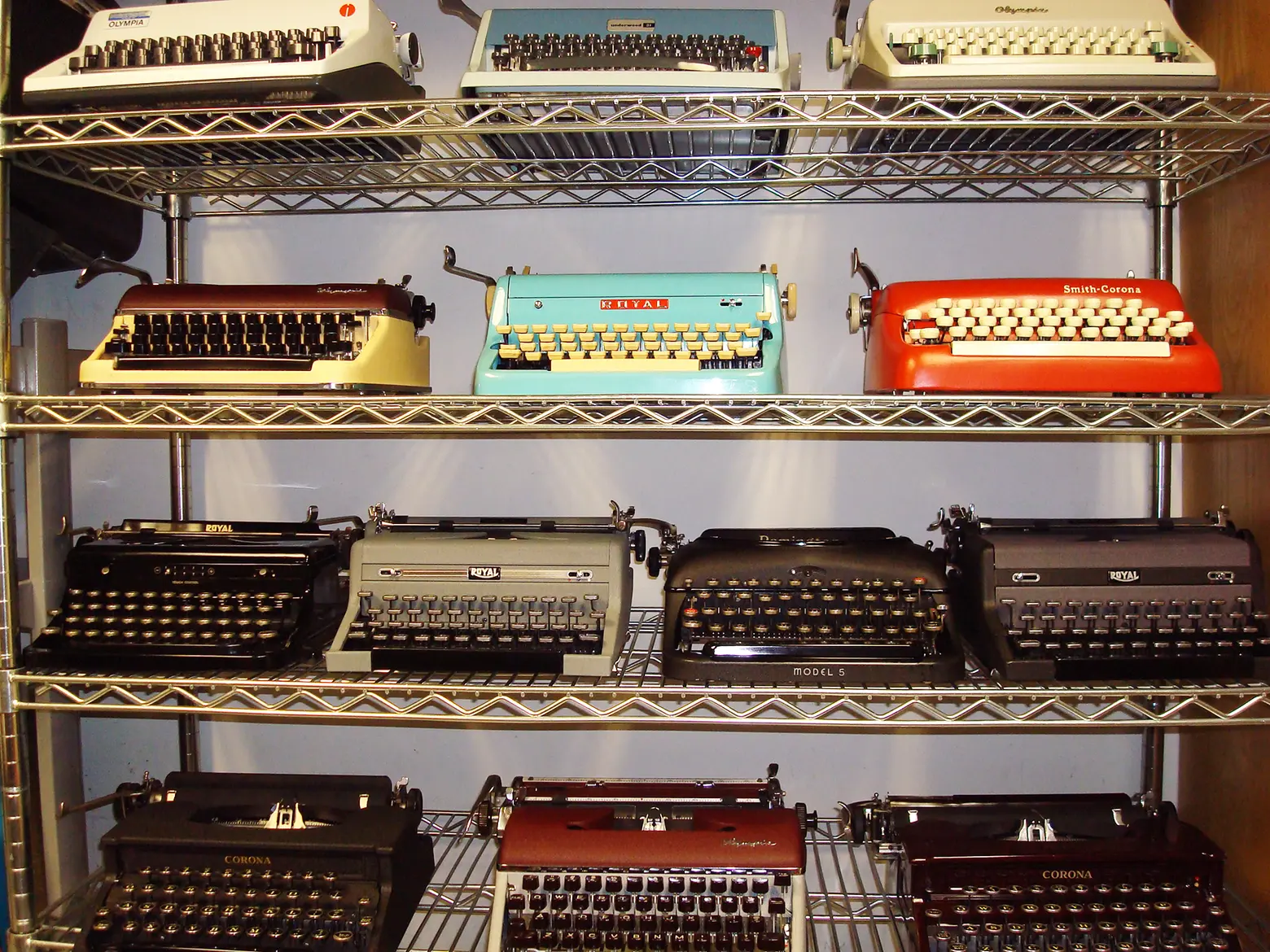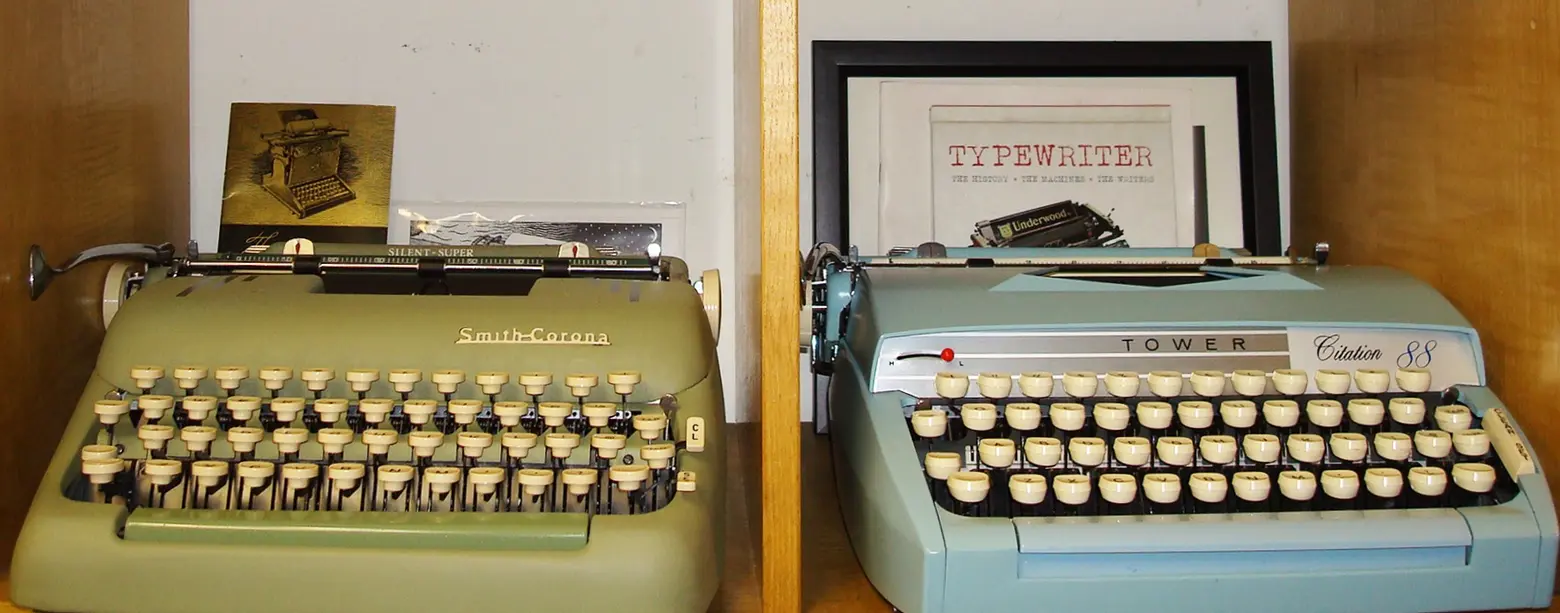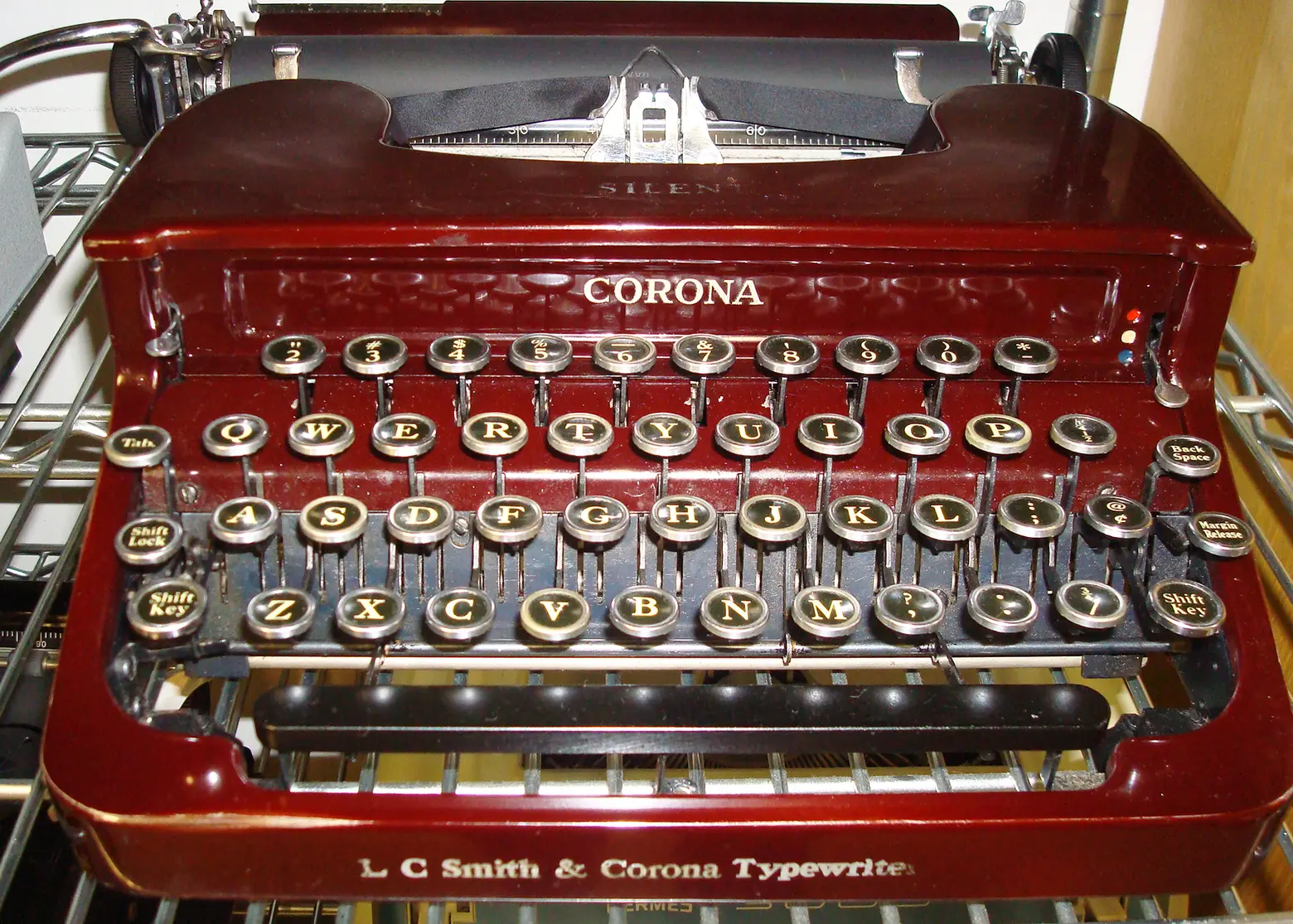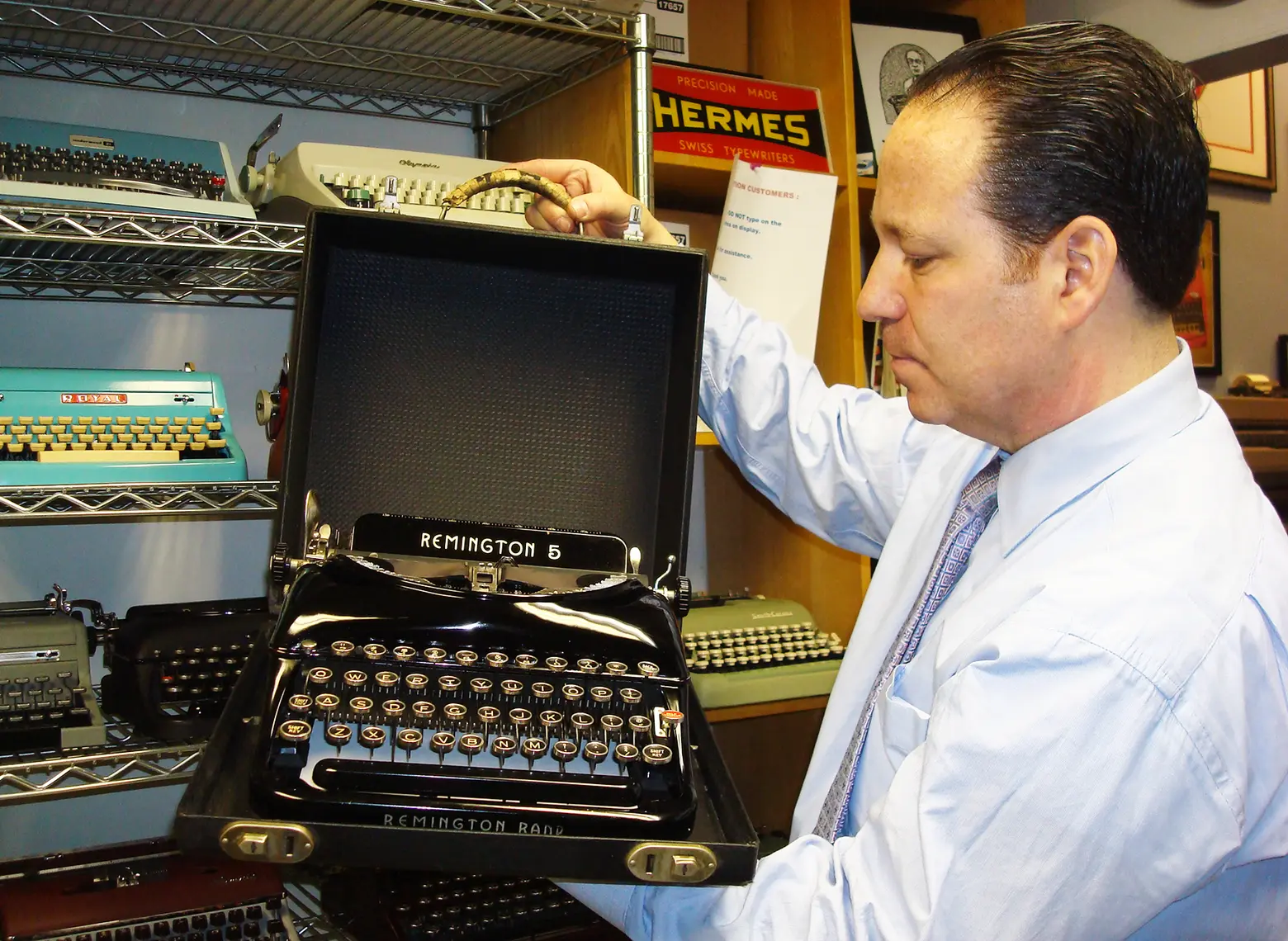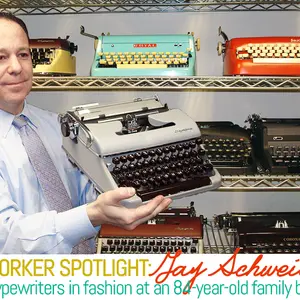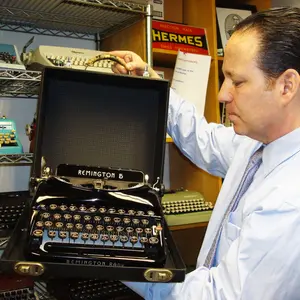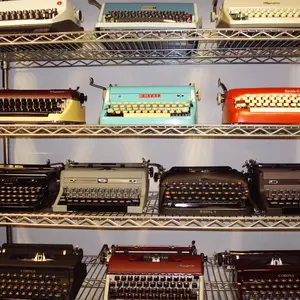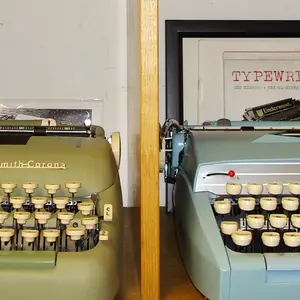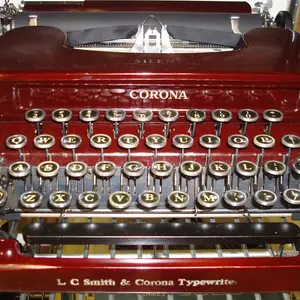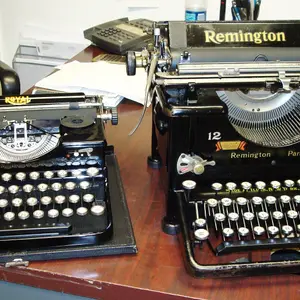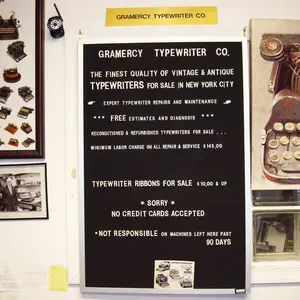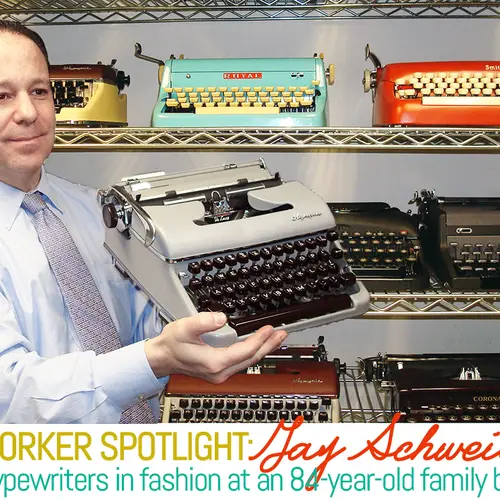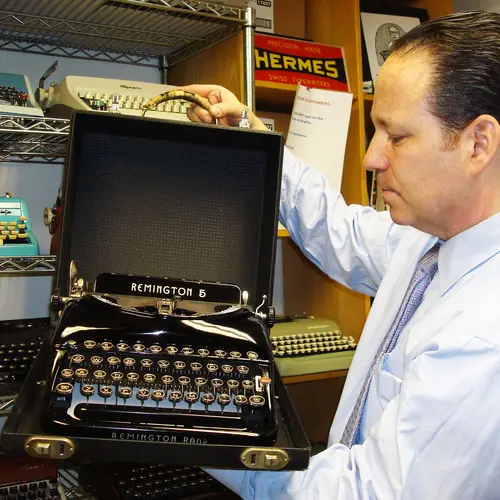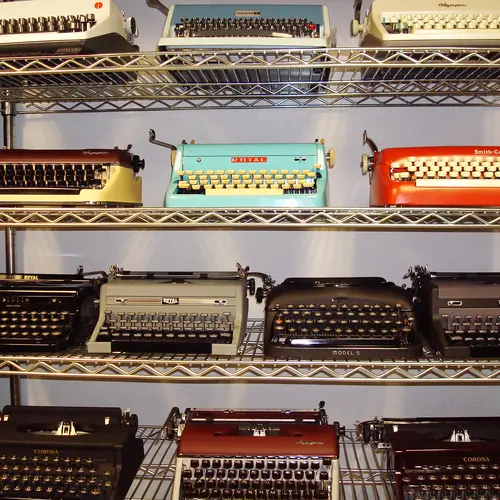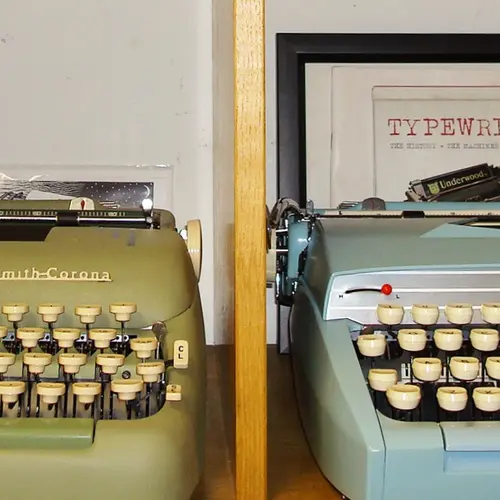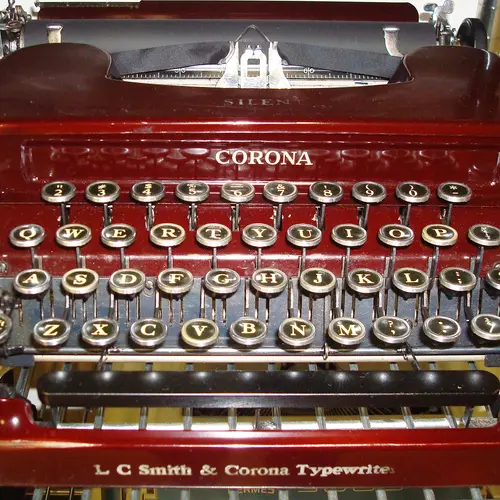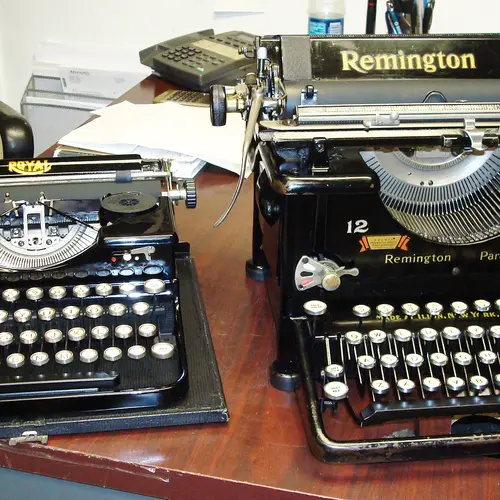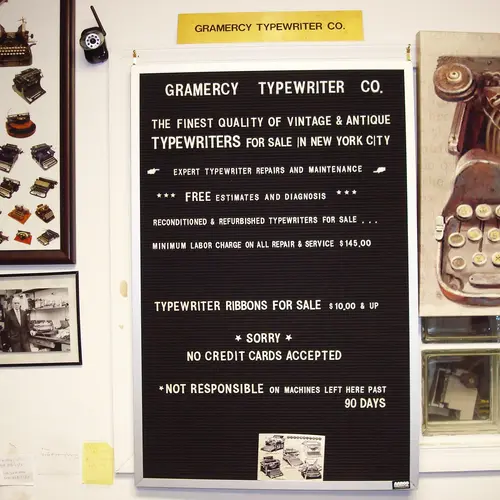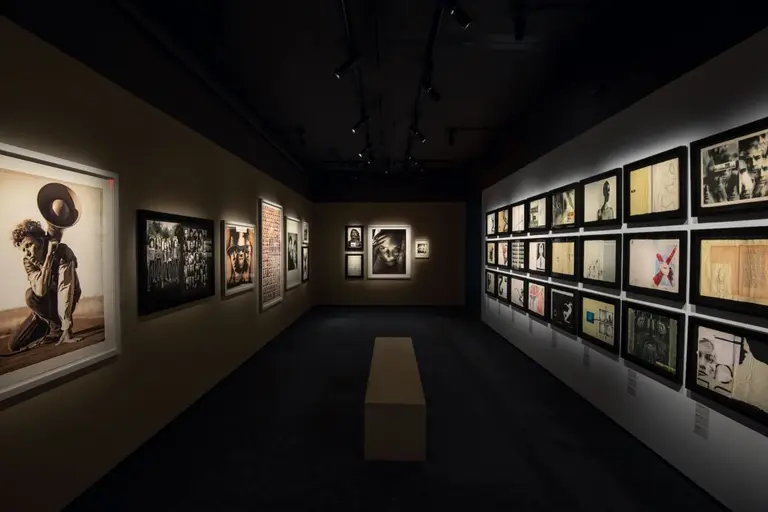Spotlight: Jay Schweitzer Keeps Typewriters in Fashion at an 84-Year-Old Family Business
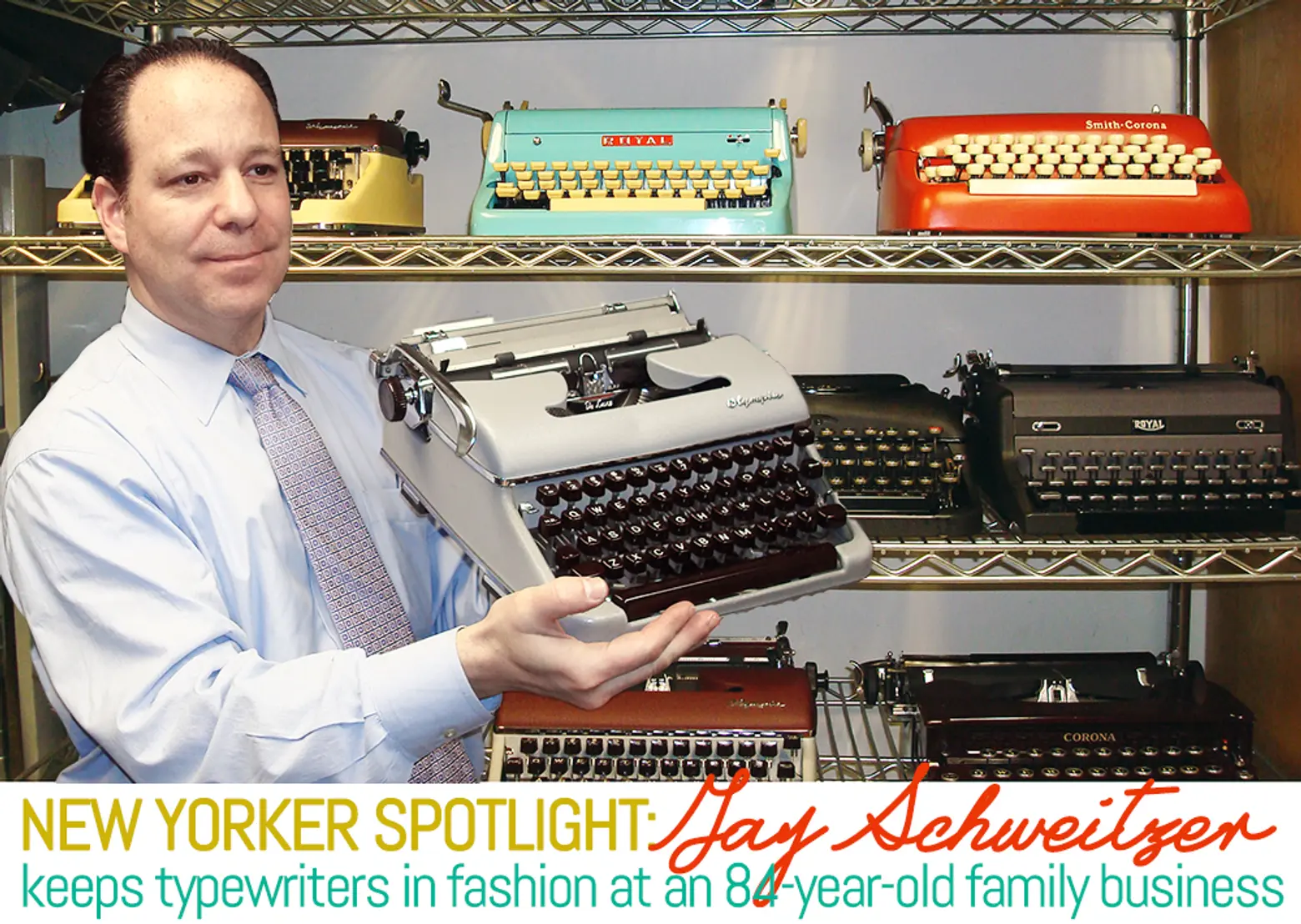
For anyone who thinks computers have entirely taken over, they might want to visit Gramercy Typewriter Company. Founded in 1932 by Abraham Schweitzer, this 84-year-old family business is busier than ever repairing customers’ typewriters, as well as refurbishing and selling machines of all shapes, sizes, and even colors. Whereas many typewriter service companies went out of business with the rise of computers, Abraham’s son and grandson, Paul and Jay, remained passionate about them and are now two of the only individuals in the city with the skills to work on these machines.
For Jay and Paul, the demand for their expertise is a testament to the staying power of typewriters in the 21st century. They continue to be a necessity in fields such as law and accounting, where certain forms are more compatible with the typewriter than the computer. Outside of offices, there are tried-and-true typewriter users who type on them daily. In many cases, the Schweitzers’ have customers who are discovering a love of these wonderful machines for the very first time. 6sqft stopped by Gramercy Typewriter Company and spoke with Jay about the business and to get a glimpse of history on the company’s shelves.
Right off the bat, is there one thing a typewriter can do that a computer absolutely cannot?
The typewriter seems to keep people focused, where the computer does the opposite. I hear this echoed constantly from customers who say they find too many distractions with the computer; they can’t get their work done, their mind starts wandering. The typewriter only does one thing – it types. And they find themselves focused and actually getting work done.
Why did your grandfather found Gramercy Typewriter Company?
The history of Gramercy Typewriter Company is that we started in 1932, founded by Abraham Schweitzer, who at the time was just looking for work and was hired by a typewriter company to help around the shop. After doing this for a short time, he realized that he could do this on his own. He started the Gramercy Typewriter Company and canvassed for business around the city. After developing some accounts, word of mouth started leading into more business. Fast forward to 1959, my father Paul Schweitzer got out of the Navy and came to work with his father Abraham, thinking it was something he’d do for a short time until figuring out what he wanted to do. Many decades later, he’s still here and has made a career out of it and built the business up dramatically from when it started. I’ve been here working alongside my dad, who’s taught me everything.
Was there a particular moment when you decided to join the family business?
This is something I’ve watched and been a part of since childhood. When I was off from school, my dad didn’t want me sitting around the house, so he would drag me into work with him. I always knew in the back of my head that I really liked being around these machines, and if I liked being around them and I liked to work with my hands, what a great opportunity to be around my dad because he knows it better than anybody.
Do you feel as though you apprenticed here?
It’s learning as you go because even my dad, 58 years in the business, will still come across something he’s never seen before. And you can chalk that up to a machine that is so old that all of a sudden something is mechanically wrong that’s never happened before, a mechanism inside the machine that has lasted 70, 80, 90 years broke or disassembled. So in this type of business, you’re really learning something every single day. And being the one of the only typewriter companies in town now, we only have each other because there’s no calling a hotline or a service center or calling the manufacturer of the typewriter because they’re long gone.
Has the company always been in this location?
When my grandfather started the business he needed a small office space to keep some supplies and parts and what not. He got a little office space next to Gramercy Park, so he decided to call the company Gramercy Typewriter Company. Years later, they found space on 23rd Street and 5th Avenue and lasted there about 25 years, then moved into the Flatiron Building at 175 5th Avenue for 47 years. About nine years ago we moved to 174 5th Avenue.
This used to be a very industrial area. You’d only find businesses around here. Within the last decade retail shops have been popping up all over the place, beautiful designer stores. This has become a very big shopping district and a very big tourist destination, so the streets around her have certainly become a lot more traveled.
Over the course of a year, how many typewriters do you repair?
I would say over the course of the year collectively between my dad and me, we could repair and service hundreds of typewriters. In the course of a week, we’re working on 20-30 machines. We’re working on machines that customers bring into our shop, and we’re working on machines that we’re refurbishing and restoring for our display shelves that we sell.
Who is your clientele and how are they finding you?
As far as who is coming into our shop, it’s a big mix. It’s parents coming in with their children who are fascinated by the typewriters. They might have seen it in a movie or a commercial or at a friend’s house, and now they’ve got to have one. Of course 20- and 30-year-olds are really getting back into nostalgia. They want to get away from the computer screen and go back to basics. And they appreciate the craftsmanship and beauty of these old typewriters. There are people who grew up on the old typewriters who just can’t be without one. So if they have one that is need of service or is not working, they feel it’s very important to get it fixed as soon as possible so it doesn’t disrupt their daily routine.
Do some of the individuals in their 20s and 30s need lessons on how to use a typewriter?
Absolutely. They need a course, and we give that to them in just a matter of minutes. They’re just not familiar with how much tension is involved in their fingers to hit the keys thus resulting in seeing the print on the paper. They’re so used to their electronic devices where their fingers are just tapping on a screen and everything prints for them. But with the typewriter, their fingers really have to get working, and in the beginning stage it feels a little bit awkward for them. Within a matter of minutes, after we show them the functionality of the machine, they do a lot better, and within weeks it’s second nature.
Do set designers ever come to you for a specific model?
It happens often with television shows, Broadway, and film shoots around the city. Sometimes they know exactly what they’re looking for, sometimes they ask us for guidance. They’ll tell us the time period they’re working with and ask us what typewriter would be relevant for that time frame, and then we steer them in the right direction.
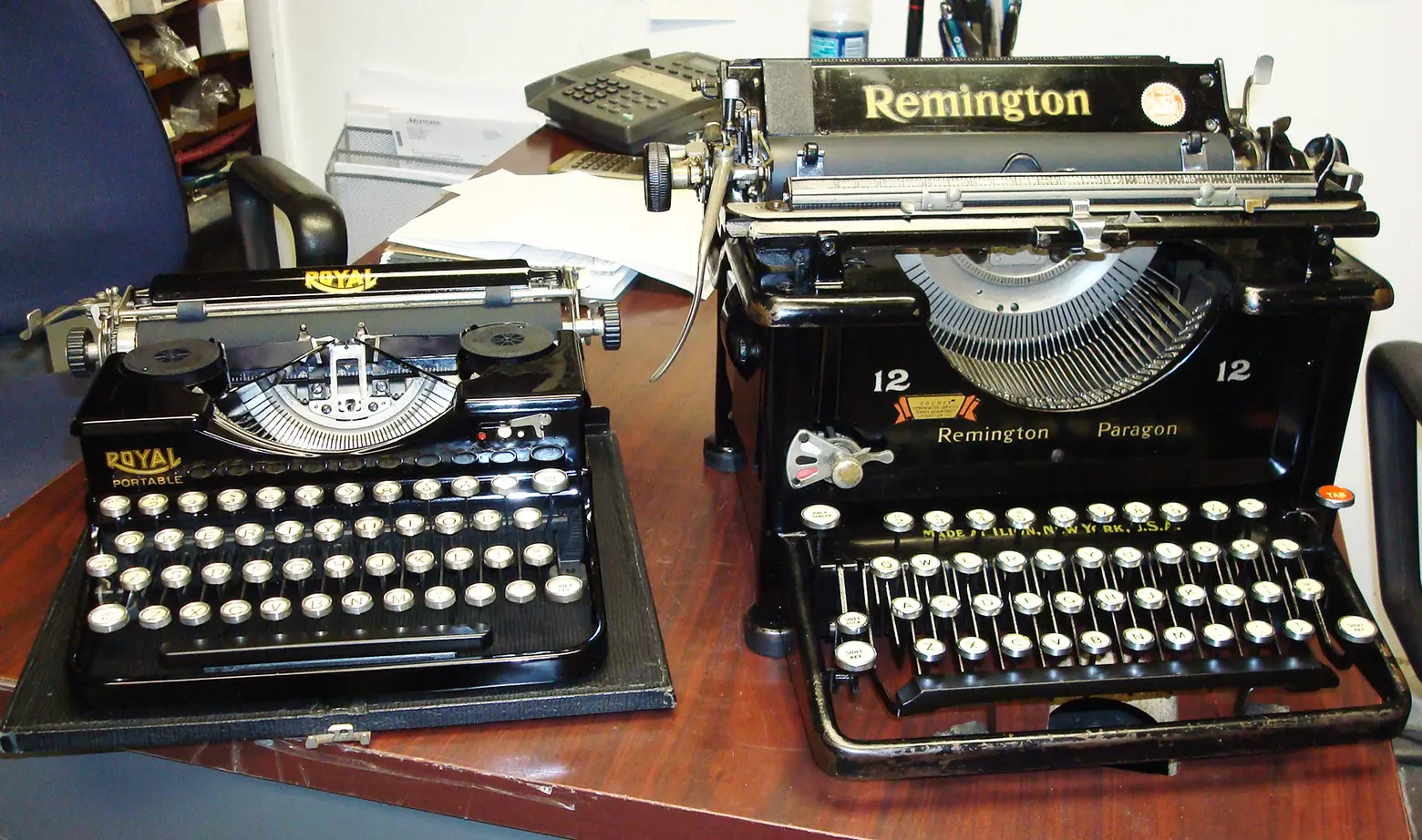
A 1930s Royal on the left and a 1920s Remington on the right
Can you talk a little bit about the typewriters around the shop?
What you’ll see scattered around our shop represents the top name manufacturers from back in the day: Royal, Corona, Olivetti, Remington. Unfortunately, all of these companies don’t exist anymore. We are preserving, restoring, refurbishing, and serving all the machines of old and getting them back up to snuff. We try to get them to be just like new, but realistically speaking these are machines that could date back 90 years.
Are there significant differences between typewriters from different decades of the 20th century?
There’s actually not much of a difference because the fundamentals are all the same. You put the paper in manually. You have a typewriter keyboard layout that is similar on all of the machines. They’ve all stayed with that layout. As far as really looking at the typewriter carefully, you’ll see very subtle differences like where the backspace key, ribbon selector, ribbon reverse switch, and line spacing lever are located. They did try to evolve with the times and mix it up every few years, mainly for sales.
With how screen oriented the world is now, do you think we should all go back to typewriters?
I feel it’s certainly something that should be part of everybody’s life in some way, shape, or form. I’m not saying go to it every single day, but certainly type somebody a letter, type a holiday greeting, type up an envelope, type a birthday card. It’s more personable, and it’s something people will appreciate getting. And it’s nice to get away from that screen and think about what’s going on the paper.
What is the best part of working here?
The best part of the job is having a machine that turns into something that is extremely challenging, that requires so much maintenance, reconditioning, and part replacement. You have a customer who wants to preserve a machine that may be a family heirloom, and at the end of the day, if we can finish the job and look at the machine and remember how it was when they brought it in versus how it is now, it’s a very good feeling. The best feeling of all is when the customer comes in to pick it up and they’re just mesmerized. They brought in a machine that looked like a mess, was far from functioning, and now it’s a beautiful, pristine piece they are so proud of.
+++
Gramercy Typewriter Company
174 Fifth Avenue, 4th Floor
New York, NY 10010
(212) 674-7700
[This interview has been edited]
RELATED:
- New Yorker Spotlight: Brian and Andy Marcus Carry On a Three-Generation Photography Tradition
- New Yorker Spotlight: Scott Liroff Sheds Light on His Century-Old Family-Run Business, City Knickerbocker
- New Yorker Spotlight: Doug Steinberg Keeps the Doors Open at 110-Year-Old New York Central Art Supply
- New Yorker Spotlight: Danny Wasserman of Tip Top Shoes, a Mom & Pop Outfitting the UWS for More than 50 Years
All photos via 6sqft
